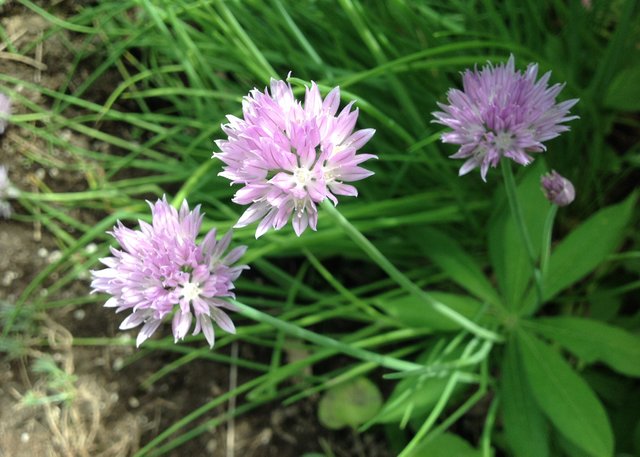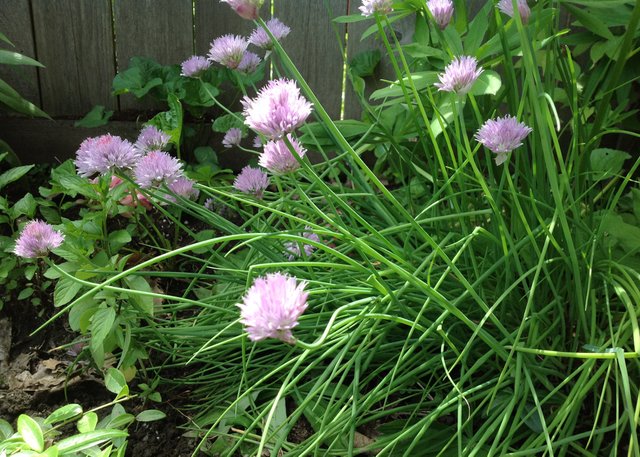Growing and using Chives - allium schoenoprasum

Back when I was living at home, my father and I staked out our respective gardening territories. He had the vegetable garden and I had the flower beds. The fruit trees and grape vines were our neutral zone. He liked to tease me with, "but you can't eat that" and in response I knew exactly which flowers could be eaten. Nowadays I mix my vegetables and my flowers and today I'm thinking of him because it's Fathers' Day.
Now back to those chives. The flowers are pretty and the foliage, like tiny green onion leaves, is distinctive enough that you would want it even if you couldn't eat every part of the plant. As a member of the allium family, chives are related to onions and garlic but they're mild, and it is the only species of allium native to both the old and new worlds. This is a herb that has been cultivated for 5,000 years.
Growing them
Chives are a hardy perennial. Every winter, if you have a winter, the tops die down to the bulbs and then in spring, the new leaves appear. They prefer full sun and rich, moist, well drained soil but they're pretty tolerant; tolerant of poorer soil, drier soil, and a little shade.
To grow them, you can plant seeds, starting them indoors for a jump on the season, or you can transplant seedlings. They start easily and they transplant well. An established clump can also be broken up at any time the soil is workable. You can plant as few as several bulbs and they will reestablish themselves.
Cooks will appreciate that chives can be grown indoors in pots. Patio gardeners can grow them in pots as well.

Warning: You should know about deadheading because it's important. That's when you remove the dead flowers. This is done on many flowering plants to encourage blooms but on chives it's done so they don't scatter their seeds absolutely everywhere.
Harvesting & Preserving
To harvest them, cut them off about 2" (5 cms) above the ground. If the clump is established, this can be done any time. If it's their first year, wait until they are about 6" (15 cms) tall. A market gardener might cut back the entire plant to harvest it all at once. Home gardeners have the convenience of using them as required - do that starting with the outer leaves.
If you're not using them fresh, the best way to preserve them is by freezing. Drying them reduces their flavour so it's not recommended. Either freeze them in plastic bags OR chop them and divide them into pre-measured amounts and freeze them in ice cubes. Store the cubes in plastic bags in the freezer.
To Use
Chives are often used fresh on baked potatoes, in cream soups, and with egg dishes. The edible flowers are lovely in salads and the scapes (flower buds) can be used in salads and in cooking.
References
Growing Chives
Chives
Chives, herb of the week
Images
All photos from the iPad of @kansuze.

@kansuze
Go here https://steemit.com/@a-a-a to get your post resteemed to over 72,000 followers.
I grow chives too....and you're absolutely right about deadheading! I neglected to do it last year and now they are everywhere......but I don't mind too much as they are easy to hoe if you don't want them.
Mine are close to my other perennials. I manage to deadhead them in time but the lupins went everywhere. lol
Thanks for the warning! Last year I tossed hundreds of lupin seeds and now I'm hoping I won't regret it!
Wow, I don't have chives. Maybe it's time I grew some! I was not aware they were so easy to grow!
I think I have had mine for 20 years, moving them once. They have been completely trouble free, no diseases, etc and tasty.